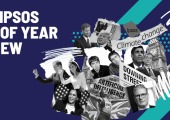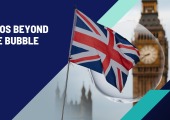Worcester's Weblog - Poll Gap: Internet v. Rest; Replay of USA?
MORI chairman Sir Robert Worcester analyses the latest opinion poll data.

MORI chairman Sir Robert Worcester analyses the latest opinion poll data.
Congratulations to the YouGov founders and shareholders who will be wealthier on Monday, when their float delivers about 16318 million valuation to the fledgling company. YouGov has a turnover of just under 1632 million, so valued at c. 9 times their turnover, and with a profit last year of c. 163600k, a 30 x profit price. Well done!
In the interview with Peter Kellner in the Evening Standard last week, he extolled their enviable record on getting elections right, save Europe last June, but not mentioning the London Mayor's figures and ignoring completely their problems with the fact that President Kerry isn't after all in the White House, as both YouGov, polling for the Economist, and Harris International, the only other internet pollster, thought would happen, the only two of the 18 polls released in the final two days of the campaign to be so far out, as the table below shows.
All 16 telephone polls were within 177 3% of the election result of the share of each party adjusting for different reporting policies; 12 were within 177 2% and 5 were within 177 1%, yet I still hear many people here talking about how the polls got the American elections wrong.
Are we about to see a replay of the American experience?
So far in this British election, with under two weeks to go, there is evidence of a gap between the phone pollsters, NOP (2 phone), ICM (5 phone), Communicate Research (1 phone), Populus (1 phone) and MORI (3 phone and 1 face to face), and the two Internet based polls, (6) and BPIX, organised by the academics Sanders and Whitely. BPIX (2). haven't told us who does their Internet panel poll yet. So, 23 polls in all, 14 phone/F2F and 9 internet.
Since the start of the election each group has exhibited a remarkable consistency, but significantly different from the other group.

Of course, the gap may close between now and May 5th, but according to our track, trying to average out the rolly pollys so as not to count them more than once each per four-day 'fresh' sample, we find that the phone/F2F polls average 32.5% for Tories, 39.2 for Labour, and 21.0 for the Liberal Democrats, a 6.7 point lead for the Labour Party, whereas the two Internet pollsters, YouGov and BPIX's sub-contractor, have the Conservatives at 34.8%, Labour at 36.3% and Lib Dems at 21.4%, or a 1.5 point lead for Labour.
There's a gap then at the half-way mark of 5.2 points gap between the different methodologies; just 1.2 points over what there was in the USA in November 2004.
More insights about Public Sector



